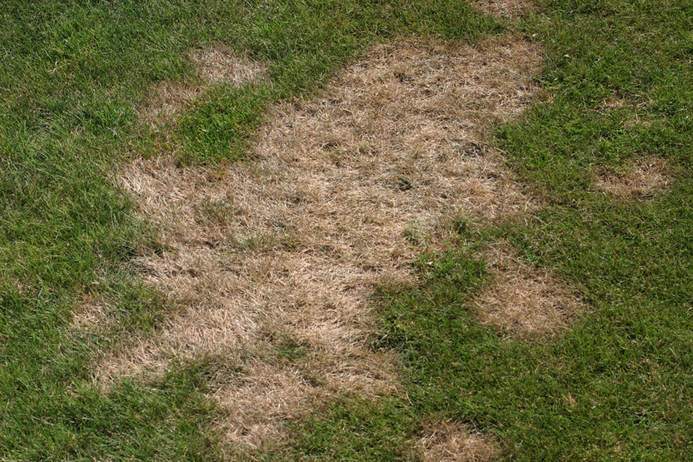|
Keeping a lawn healthy and green can feel like an uphill battle, especially when dealing with weeds. Lawns are also susceptible to disease, making things even more complicated. Here's how to identify three common lawn diseases, their causes, and what you can do to turn things around. Dollar Spot With Dollar Spot, grass tends to die in small, circular spots 4 to 12 inches wide. As the spots grow, they may fuse together creating big, brown blotches in your lawn. Favorable conditions for Dollar Spot include mild to warm weather (60 to 85 degrees), excessive moisture, and under-fertilization. Thatch in your lawn can also encourage this disease. What you can do: 1. Raise the cutting height of your mower to 3 to 4 inches to allow grass leaves to dry between watering. 2. Fertilize your lawn, starting in the spring, at least a few times throughout the year, in regular intervals. 3. Adjust your sprinklers so you're watering deeply but infrequently, ideally in the early morning hours. Rust With Rust, grass blades develop dust-like, orange-colored spores. Areas in your lawn that are affected will have a rusty look. Rust doesn't typically hurt the grass but it can be a nuisance and detract from that lush, green aesthetic you'd probably prefer. Over time, it can lessen the vigor of your grass which can attract other diseases to infect your lawn. Favorable conditions for Rust include mild temperatures (60 to 75 degrees), dry weather conditions. Over-fertilization and heavy thatch can also encourage the spread of Rust. What you can do: 1. Mow your lawn frequently at a moderate height (2 to 3 inches) and rinse off lawn equipment to prevent the spread of the disease. 2. Rake and remove any thatch that becomes more than a half-inch deep. 3. Water early in the day so the grass has a chance to dry before the warmest point of the day. Pythium Blight
With Pythium Blight, grass will develop orange to copper-colored circular spots from 1 to 6 six inches in diameter. These grow quickly, however, and can cause large areas of discoloration and dead turf in your lawn, especially in areas with poor drainage. Favorable conditions for Pythium Blight include warm to hot, humid weather (think of those days when it doesn't even seem to cool down at night) and lush lawns that hold a lot of moisture. What you can do: 1. Watch your lawn for what appear to be darker green areas that might look wet or dewy (this is due to the greasy or oiliness of infected grasses). At first sign, you will want to introduce the use of a fungicide because this disease is a difficult one to control. 2. Make sure you address any drainage issues with your lawn to remove excess water build-up. 3. Rake and remove any thatch that becomes more than a half-inch deep. In the Eugene-Springfield area, Graham Landscape & Design works with homeowners and business owners to maintain healthy lawns and beautiful landscapes. If you suspect you're dealing with lawn disease or could use some help with maintenance to prevent disease, please give us a call at 541-729-8029 to schedule a consult today.
0 Comments
Your comment will be posted after it is approved.
Leave a Reply. |
OUR BLOG
Check here to see what we've been up to! Categories
All
|
|
|
Copyright © Graham Landscape Maintenance & Design LLC in Eugene Oregon. All rights reserved.
LCB # 8920 541-729-8029 34024 Old Willamette Hwy S., Eugene, OR 97405
Offering Landscape Design and Maintenance in Albany, Coburg, Corvallis, Cottage Grove, Eugene, Junction City, Roseburg, Springfield, Veneta and Surrounding Areas
LCB # 8920 541-729-8029 34024 Old Willamette Hwy S., Eugene, OR 97405
Offering Landscape Design and Maintenance in Albany, Coburg, Corvallis, Cottage Grove, Eugene, Junction City, Roseburg, Springfield, Veneta and Surrounding Areas



 RSS Feed
RSS Feed
